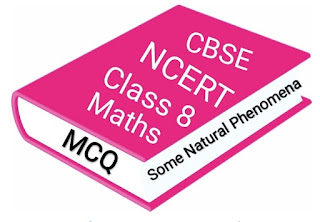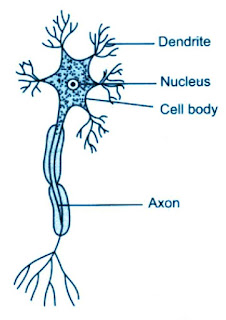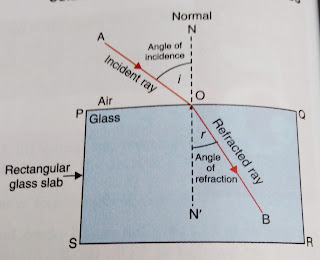MCQ Questions for Class 8 Science Chapter 15 Some Natural Phenomena
MCQ Questions for Class 8 Science Chapter 15 Some Natural Phenomena with Answers
-------------------------------------------------------------
Board CBSE
-------------------------------------------------------------
TextBook NCERT
-------------------------------------------------------
CLASS Class 8
--------------------------------------------------------
SUBJECT Science
----------------------------------------------------------
CHAPTER Chapter 15
-------------------------------------------------------------
SUBJECT Some Natural Phenomena
--------------------------------------------------------------
Topic Multiple Choice Questions
---------------------------------------------------------
You May Also Like Multiple Choice Questions on -
Also Visit: 1.MCQ Class 8 Science
3. NCERT Solutions Class 8 Science
Question 1.
Electroscope is a device by which we detect an object is
(a) charged
(b) magnetized
(c) solid
(d) good conductor of electricity
Answer
Answer 1:
(a) charged
Question 2.
By which thing electric current can passes from one body to another
(a) cotton thread
(b) copper wire
(c) plastic string
(d) rubber band
Answer
Answer 2:
(b) copper wire
Question 3.
The process of transfer of charges from a charged object to the earth is called
(a) electric current
(b) earthing
(c) electric induction
(d) lightning
Answer
Answer 3:
(b) earthing
Question 4.
when positive charge and positive charge bring close to each other, they
(a) attract each other
(b) repel each other
(c) neither attract more repel each other
(d) none of the above
Answer
Answer 4:
(b) repel each other
Question 5.
when positive charge and negative charge bring close to each other, they
(a) attract each other
(b) repel each other
(c) neither attract more repel each other
(d) none of the above
Answer
Answer 5:
(a) attract each other
Question 6.
Among the following, which is not a cause of tsunami
(a) Volcanic eruption
(b) lightning
(c) A major nuclear explosion undersea
(d) Volcanic eruption
Answer
Answer 6:
(b) lightning
Question 7.
The outermost layer of earth is called
(a) inner core
(b) outer core
(c) mantle
(d) crust
Answer
Answer 7:
(d) crust
Question 8.
The shaking of earth is called
(a) lightning
(b) tsunami
(c) earthquake
(d) none of the above
Answer
Answer 8:
(c) earthquake
Question 9.
Static electricity produce when the two bodies are
(a) rubbed to each other
(b) rolling to each other
(c) beating to each other
(d) heating
Answer
Answer 9:
(a) rubbed to each other
Question 10.
Lightning conductor placed over top of a building because
(a) to collect electricity from lightning
(b) to force the lightning to fall an area where there is no buildings
(c) helps to transfer the electric charge of the lightning to the ground
(d) force the lightning to fall over the building
Answer
Answer 10:
(c) helps to transfer the electric charge of the lightning to the ground
Question 11.
Which of the following does not allow to passage of electric current from one body to another
(a) copper wire
(b) aluminum wire
(c) plastic wire
(d) conductor
Answer
Answer 11:
(c) plastic wire
Question 12.
Which of the following allow to passage of electric current from one body to another
(a) plastic wire
(b) rubber band
(c) cotton threads
(d) copper wire
Answer
Answer 12:
(d) copper wire
MCQ Questions for Class 8 Science Chapter 15 Some Natural Phenomena with Answers
Question 13.
Sparks can be seen when two ends of wires are
(a) tightly fitted
(b) wrinkle
(c) loosely fitted
(d) none of the above
Answer
Answer 13:
(c) loosely fitted
Question 14.
Among the following, which is not an example of natural phenomenon
(a) cyclone
(b) lightning
(c) earthquake
(d) glowing electric bulb
Answer
Answer 14:
(d) glowing electric bulb
Question 15.
The outermost layer of the earth is
(a) inner core
(b) outer core
(c) mantle
(d) crust
Answer
Answer 15:
(d) crust
Question 16.
Like charges
(a) repel each other
(b) attract each other
(c) neither attract nor repel
(d) none of the above
Answer
Answer 16:
(a) repel each other
Question 17.
Unlike charges
(a) repel each other
(b) attract each other
(c) neither attract nor repel
(d) none of the above
Answer
Answer 17:
(b) attract each other
Question 18.
Among the following which state of India is not likely to be affected by earthquake
(a) Uttar Pradesh
(b) Rajasthan
(c) Jammu Kashmir
(d) Gujarat
Answer
Answer 18:
(a) Uttar Pradesh
Question 19.
Among the following which material is used to make lightning conductor
(a) wood
(b) plastic
(c) metal
(d) cotton
Answer
Answer 19:
(c) metal
Question 20.
Lightning is the huge scale of
(a) heating effect
(b) magnetic effect
(c) electric spark
(d) sounds effect
Answer
Answer 20:
(c) electric spark
Question 21.
The boundaries of the earth
(a) fault zone
(b) poor zone
(c) volatile zone
(d) default zone
Answer
Answer 21:
(a) fault zone
Question 22.
The high top buildings can be protected by using
(a) a log of wood at the top of the building
(b) lightning rod at the top of the building
(c) lightning rod at the basement of the building
(d) none of the above
Answer
Answer 22:
(b) lightning rod at the top of the building
Question 23.
Among the following which has negative charge
(a) proton
(b) electron
(c) neutron
(d) none of the above
Answer
Answer 23:
(b) electron
Question 24.
What type of force is acted between electron and proton
(a) repulsion force
(b) attraction force
(c) sometimes repulsion and sometimes attraction
(d) none of the above
Answer
Answer 24:
(b) attraction force
Question 25.
When we rubbed two bodies to each other than the body which get electrons is become
(a) negatively charged
(b) positively charged
(c) remains neutral
(d) none of the above
Answer
Answer 25:
(a) negatively charged
Question 26.
When we rubbed two bodies to each other than the body which lose electrons is become
(a) positively charged
(b) negatively charged
(c) remains neutral
(d) none of the above
Answer
Answer 26:
(a) positively charged
Question 27.
Lightning is the phenomenon which is caused due to
(a) sudden movement of the tectonic plates of the earth
(b) charges produced in the clouds
(c) volcanic eruption
(d) none of the above
Answer
Answer 27:
(b) charges produced in the clouds
Question 28.
The place inside the earth where the earthquake is generated is called
(a) epicenter
(b) focus
(c) disc
(d) none of the above
Answer
Answer 28:
(b) focus
Question 29.
The instrument which is used to measure and record the magnitude of an earthquake in terms of shockwaves is known as
(a) Seismograph
(b) Richter scale
(c) Electroscope
(d) none of the above
Answer
Answer 29:
(a) Seismograph
MCQ Questions for Class 8 Science Chapter 15 Some Natural Phenomena with Answers
Question 30.
The point on earth surface just above the focus is called
(a) epicenter
(b) hypocenter
(c) focus
(d) none of the above
Answer
Answer 30:
(a) epicenter
Question 31.
Which of these is not a seismic zone in India?
(a) Rajasthan
(b) Kashmir
(c) Eastern part
(d) Rann of Kutch
Answer
Answer 31:
(c) Eastern part
Question 32.
When a positively charged body brings near to a uncharged body, due to electric induction near the surface of the uncharged body there is
(a) negative charge created
(b) positive charge created
(c) still remain unchanged
(d) none of the above
Answer
Answer 32:
(a) negative charge created
Question 33.
Lightning conductor was first discovered by
(a) Thales
(b) Robert Hooke
(c) Benjamin Franklin
(d) Issac Newton
Answer
Answer 33:
(c) Benjamin Franklin
Question 34.
The SI unit of electric charge is
(a) Ampere
(b) Volt
(c) Coulomb
(d) Watt
Answer
Answer 34:
(c) Coulomb
Question 35.
When we rubbed a glass rod using a silk cloth, the glass rod gets
(a) positive charge
(b) negative charge
(c) no charge
(d) none of the above
Answer
Answer 35:
(a) positive charge
Question 36.
Among the following which is taking place during lightning
(a) electric charging
(b) electric discharge
(c) electric charge accumulation
(d) none of the above
Answer
Answer 36:
(b) electric discharge
Question 37.
To protect the tall buildings from lightning we should
(a) not build tall buildings
(b) use lightning rod at the top of the building
(c) install TV tower at the top of the building
(d) make garden at the top of the building
Answer
Answer 37:
(b) use lightning rod at the top of the building
Question 38.
Seismograph is used to measure
(a) the strength of wind
(b) vibration of earthquake
(c) power of lightning
(d) temperature
Answer
Answer 38:
(b) vibration of earthquake
Question 39.
Name the resin which produproduces spark is
(a) amber
(b) gum
(c) gum and amber
(d) none of the above
Answer
Answer 39:
(a) amber
Question 40.
Areas falling on joints of seismic plates are called
(a) safe zones
(b) fault zones
(c) high zones
(d) none of the above
Answer
Answer 40:
(b) fault zones
Question 41.
When two bodies are rubbed then
(a) both of them get electrons
(b) both of them loose electrons
(c) one of them get electrons and one of them loose electrons
(d) none of the above
Answer
Answer 41:
(c) one of them get electrons and one of them loose electrons
Question 42.
Among the following which is occur during lightning
(a) acid rain
(b) fixation of nitrogen
(c) tsunami
(d) none of the above
Answer
Answer 42:
(b) fixation of nitrogen
Question 43.
Static electricity
(a) can move
(b) can not move
(c) moves a shorter distance
(d) none of the above
Answer
Answer 43:
(b) can not move
Question 44.
When an ebonite rod is rubbed with a woolen clothes, the ebonite rod gets
(a) positive charge
(b) negative charge
(c) remain neutral
(d) none of the above
Answer
Answer 44:
(b) negative charge
Question 45.
Static electricity produced due to
(a) friction
(b) contact
(c) induction
(d) none of the above
Answer
Answer 45:
(a) friction
Question 46.
Among the following which is get negative charge due to rubbing
(a) woolen clothes
(b) comb
(c) paper
(d) cotton clothes
Answer
Answer 46:
(b) comb
Question 47.
When we rubbed a steel bar using a silk clothes, the steel bar gets
(a) positive charge
(b) negative charge
(c) neither positive charge nor negative charge
(d) none of the above
Answer
Answer 47:
(c) neither positive charge nor negative charge
MCQ Questions for Class 8 Science Chapter 15 Some Natural Phenomena with Answers
Question 48.
How many types of charge is produced due to rubbing
(a) 1
(b) 2
(c) 3
(d) 4
Answer
Answer 48:
(b) 2
Question 49.
The surest test to detect a body is charged or not is
(a) attraction
(b) repulsion
(c) combustion
(d) insulation
Answer
Answer 49:
(b) repulsion
Question 50.
During thunderstorm it is safer to
(a) carry an open umbrella
(b) take shelter under shorter trees
(c) take shelter under tall trees
(d) stand in open fields
Answer
Answer 50:
(b) take shelter under shorter trees
MCQ Questions for Class 8 Science Chapter 15 Some Natural Phenomena with Answers
Fill in the Blanks:
Question 1.
………….. protect tall buildings from lightning.
Answer
Answer 1:
Lightning conductors protect tall buildings from lightning.
Question 2.
The negatively charged particle of an atom is…………….
Answer
Answer 2:
The negatively charged particle of an atom is an electron.
Question 3.
When we comb our hair, the comb gets……………… charge.
Answer
Answer 3:
When we comb our hair, the comb gets a negative charge.
Question 4.
An electroscope is used to ………….. charge.
Answer
Answer 4:
An electroscope is used to detect charge.
Question 5.
Most of the earthquakes are caused by the movement of earth’s ……………. .
Answer
Answer 5:
Most of the earthquakes are caused by the movement of earth’s tectonic plates
Question 6.
The electricity which is produced due rubbing is called……………
Answer
Answer 6:
The electricity which is produced due rubbing is called static electricity.
Question 7.
Sudden shaking of earth is called……….
Answer
Answer 7:
Sudden shaking of earth is called an earthquake.
Question 8.
Seismograph is the instrument that records ………….
Answer
Answer 8:
Seismograph is the instrument that records seismic waves.
Question 9.
Richter scale is used to measure the …………. of an earthquake.
Answer
Answer 9:
Richter scale is used to express the magnitude of an earthquake.
Question 10.
Lightning always follows ………….
Answer
Answer 10:
Lightning always follows thunder.
MCQ Questions for Class 8 Science Chapter 15 Some Natural Phenomena with Answers
State whether the statements given below are True or False:
Question 1.
Like charges attract each other.
Answer
Answer 1:
False
Like charges repel each other.
Question 2.
Lightning conductors protect a building from lightning.
Answer
Answer 2:
True
Question 3.
We should take a shower when it is lightning.
Answer
Answer 3:
False
We should not take a shower when it is lightning.
Question 4.
An earthquake is a sudden shaking of the earth.
Answer
Answer 4:
True
Question 5.
The process of transfer of charges from a charged object to the earth is called lightning
Answer
Answer 5:
False
The process of transfer of charges from a charged object to the earth is called earthing.
Question 6.
During earthquakes take shelter under a bridge.
Answer
Answer 6:
False
During earthquakes you should not take shelter under a bridge.
Question 7.
During lightning, electric discharge occurred between two similar charges.
Answer
Answer 7:
False.
During lightning, electric discharge occurred between two dissimilar charges.
Question 8.
Lightning conductor saves the building from lightning strike.
Answer
Answer 8:
True
Question 9.
When we rubbed the glass rod using silk clothes, the silk clothes got a positive charge.
Answer
Answer 9:
False
When we rubbed the glass rod using silk clothes, the silk clothes got a negative charge.
Question 10.
When we bring closer a charged glass rod and a charged plastic bar, they attract each other.
Answer
Answer 10:
True
Match the following:
Question
Answer
Answer
MCQ Questions for Class 8 Science Chapter 15 Some Natural Phenomena with Answers


